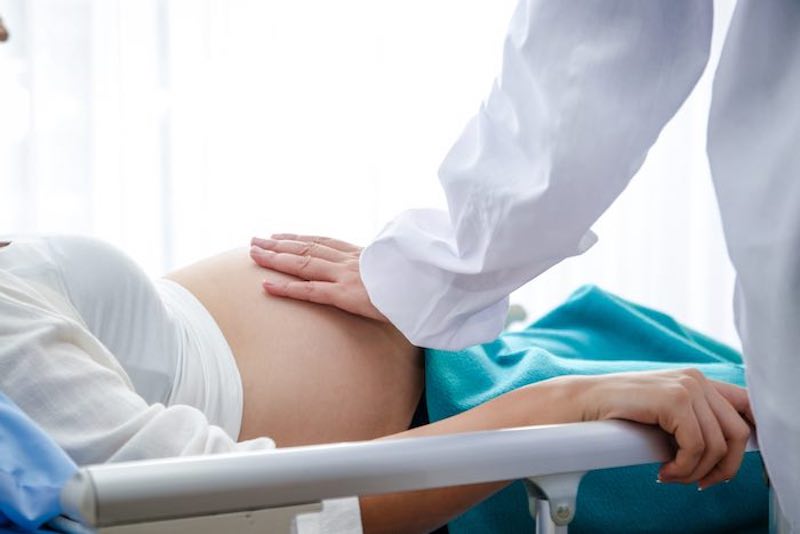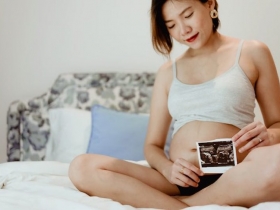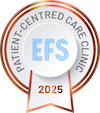Pregnancy week by week: 16 weeks
In the 16th week of pregnancy, the second trimester begins to gain full momentum. While two weeks ago, when the second trimester began, the pregnancy was not very noticeable on the woman, from the sixteenth week onwards, the time to change your wardrobe is slowly beginning. The baby has grown to about twelve centimetres and weighs about eighty grams, which could be compared to an avocado, for example. By this time, the genitals can also be distinguished. If the parents want to know the sex of the baby before birth and the baby is correctly recorded in the womb, the gynaecologist can use ultrasound to determine whether it will be a baby boy or girl.
Development of the baby in the sixteenth week of pregnancy
In the sixteenth week of pregnancy, calcium deposits strengthen the bones and the baby in the uterus can also move the joints of the hands and feet. The biggest change is that the foetus is trying to get out of the curved position and straighten up. As a result, it raises its head and moves its neck. Its body is covered with thin translucent skin and fine hair called lanugo. At this stage, the shape of the eyes and ears, which are in position, stabilise. The baby is able to respond to light at sixteen weeks, but its eyelids are still closed.
The foetus begins to use muscles that respond to stimuli from the brain. The baby begins to move in the womb, using its hands and feet, and in some cases may even kick. Because the foetus is small and there is plenty of amniotic fluid around it, most women in the sixteenth week of pregnancy do not yet feel its movements. More sensitive women or women who have already been pregnant may experience slight vibrations. But the noticeable movements of the baby will come in the next several weeks of pregnancy. At the same time, the foundations of the immune system, which is beginning to produce antibodies, are being laid.
Examinations in the sixteenth week of pregnancy
In the sixteenth week of pregnancy, it is time for the so-called triple test, thanks to which it is possible to more accurately determine any genetic risks to the foetus. This is an examination similar to the first-quarter screening, but the results of this test are more accurate and conclusive. There is no need to worry, because the test is based on a blood test. If the results show the possibility of certain risks, the gynaecologist will usually recommend the collection of amniotic fluid (amniocentesis), which can confirm or refute the risk with certainty. In addition to these tests, expectant mothers have the opportunity to undergo a combined first-quarter screening in the eleventh to fourteenth week of pregnancy, which is much more conclusive than the triple test.

The expectant mother and physical changes
In the more advanced phase of the second trimester, nausea has usually subsided. On the contrary, most expectant mothers experience the most beautiful stage of pregnancy - their skin is radiant, their hair is shiny and nails are firm. Women can still fit in their clothes that they wore prior to pregnancy, but it's high time to change their wardrobe. Some women reach for looser dresses or leggings, others have already purchased maternity clothes. Whatever variant you choose, it is very important that clothing around your abdomen is not tight.
Physically, the uterus continues to grow and is located between the pubic bone and the navel in the sixteenth week of pregnancy. During this period, many women also begin to get pigment spots, dark freckles and birthmarks, and a dark line (linea fusca or linea negra) may form on the abdomen. These symptoms are more common in women, who are expecting during the summer, because these pigment spots are more pronounced when being in the sun.
Although the second trimester is usually considered the least problematic period of pregnancy, various discomforts can occur during it as well. An increasing abdomen also brings with it stretching of the ligaments and skin, which can cause tension and itching. In the sixteenth week of pregnancy, many women complain of constipation and heartburn. This is due, among other things, to the fact that specific tastes or hypersensitivity to odours are beginning to appear at this time. Many pregnant women suffer from shortness of breath, which is caused by the fact that the foetus requires more oxygen. The expectant mother has to breathe much deeper and more intensely than she is used to.
Problems and risks in the sixteenth week of pregnancy
The second trimester is the least problematic period for healthy women, and if it is not a high risk pregnancy, it is the most beautiful period for the expectant mother. The morning sickness is resolved in most cases, women are less hypersensitive and hormonal changes have slowed down. The risk of miscarriage has also reduced. Nevertheless, gynaecologists recommend several preventive measures at this stage. One is for pregnant women to sleep on their side, ideally on the left. Lying on your back often leads to back pain and lying on your side minimises the risk of varicose veins, venous oedema and other complications.
In the sixteenth week of pregnancy, a woman can still perform the activities she is used to, but with more care. A high workload is not appropriate and on the contrary, it is time to look for an exercise course for pregnant women, such as pregnancy yoga or Pilates. Swimming and walking are also recommended. Even though the woman is being chased by "sweet cravings" during this period, she should try to maintain the basics of a proper diet with an emphasis on sufficient fibre, vitamins and minerals.






